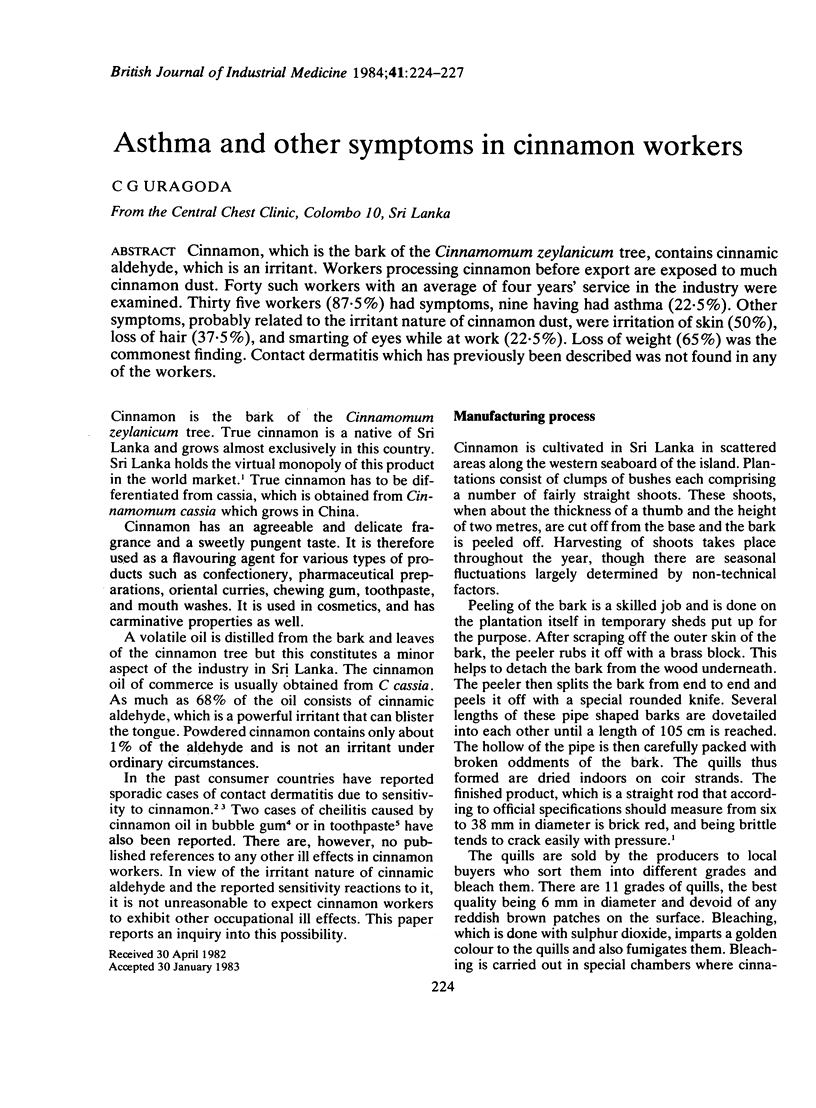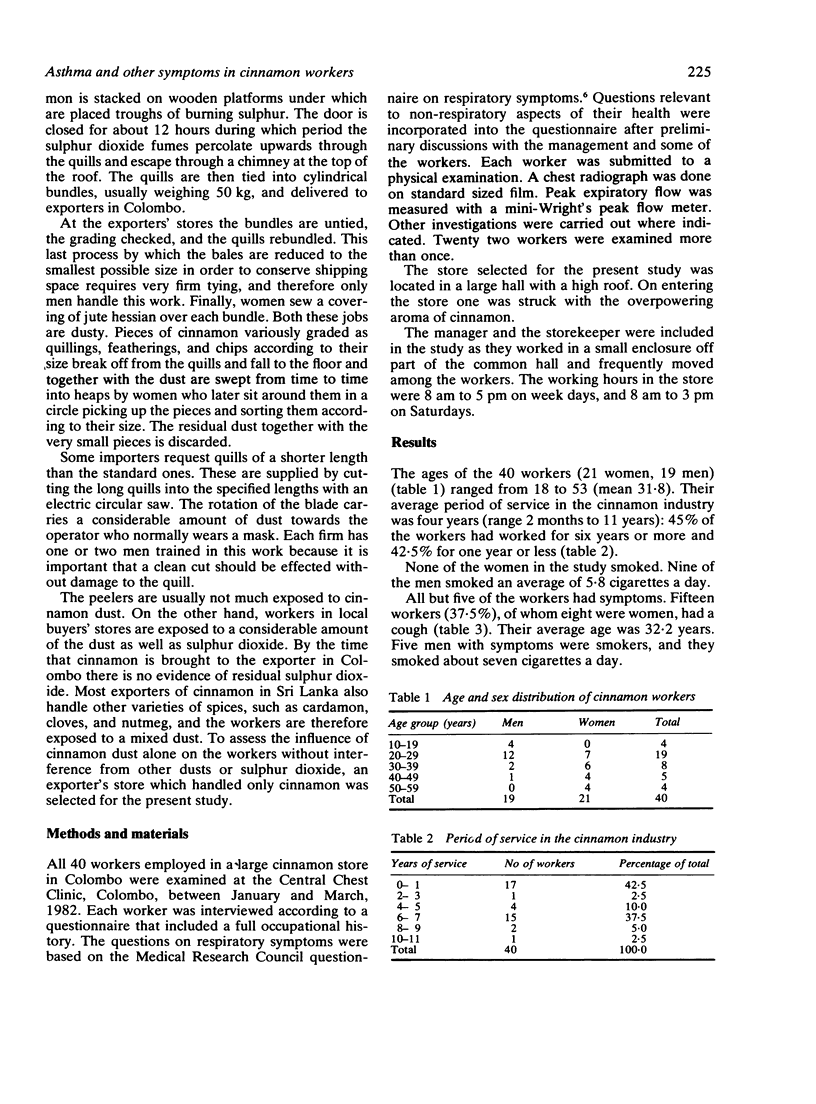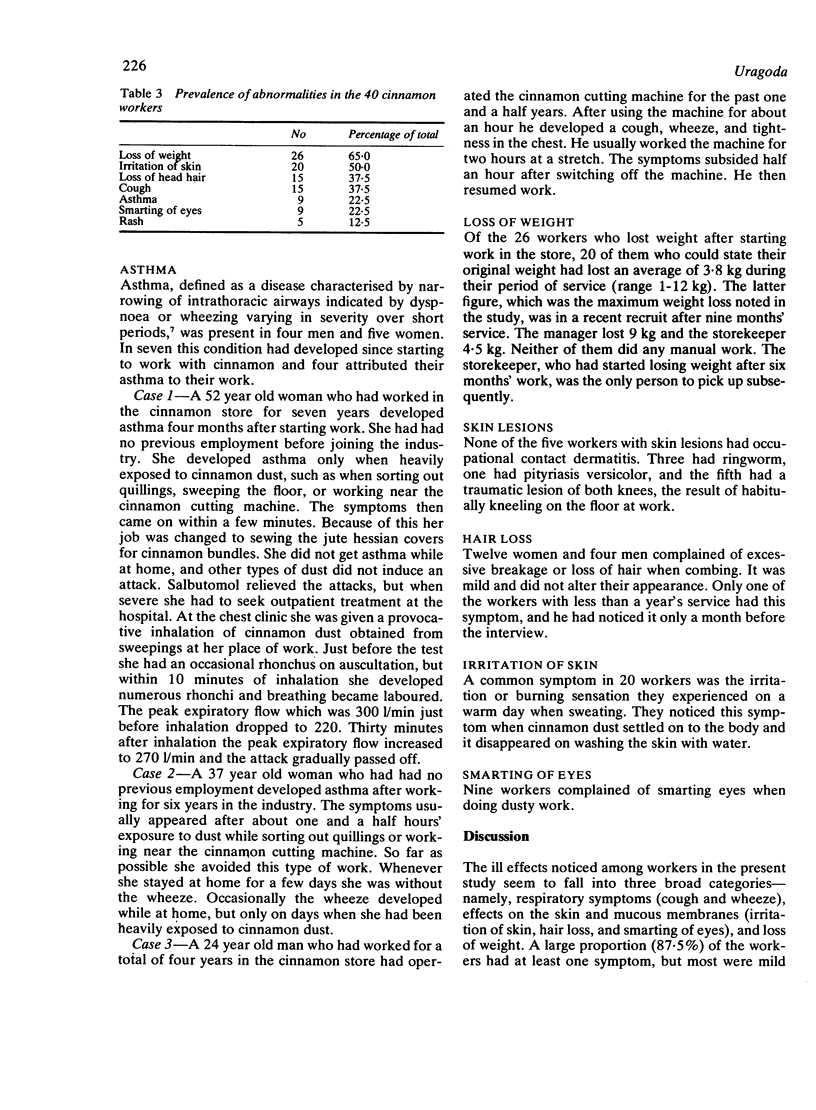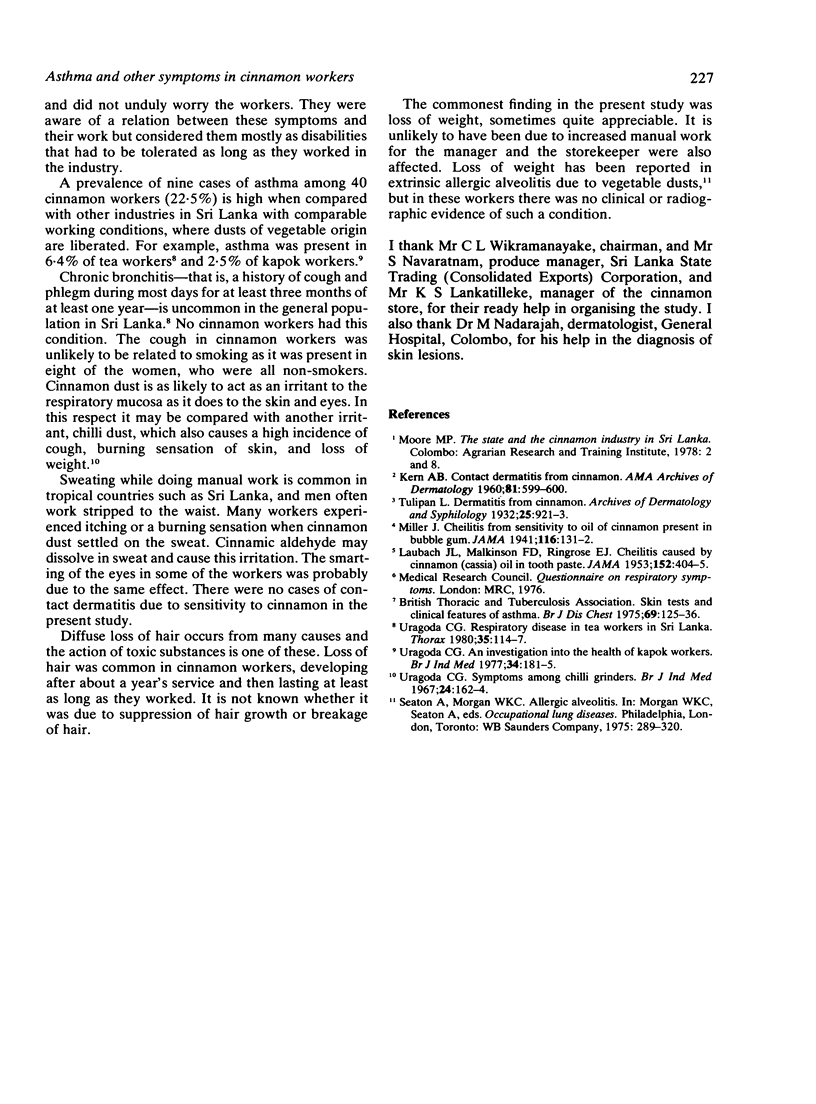Abstract
Cinnamon, which is the bark of the Cinnamomum zeylanicum tree, contains cinnamic aldehyde, which is an irritant. Workers processing cinnamon before export are exposed to much cinnamon dust. Forty such workers with an average of four years' service in the industry were examined. Thirty five workers (87.5%) had symptoms, nine having had asthma (22.5%). Other symptoms, probably related to the irritant nature of cinnamon dust, were irritation of skin (50%), loss of hair (37.5%), and smarting of eyes while at work (22.5%). Loss of weight (65%) was the commonest finding. Contact dermatitis which has previously been described was not found in any of the workers.
Full text
PDF



Selected References
These references are in PubMed. This may not be the complete list of references from this article.
- KERN A. B. Contact dermatitis from cinnamon. Arch Dermatol. 1960 Apr;81:599–600. doi: 10.1001/archderm.1960.03730040103018. [DOI] [PubMed] [Google Scholar]
- LAUBACH J. L., MALKINSON F. D., RINGROSE E. J. Cheilitis caused by cinnamon (Cassia) oil in tooth paste. J Am Med Assoc. 1953 May 30;152(5):404–405. doi: 10.1001/jama.1953.63690050006008c. [DOI] [PubMed] [Google Scholar]
- Uragoda C. G. An investigation into the health of kapok workers. Br J Ind Med. 1977 Aug;34(3):181–185. doi: 10.1136/oem.34.3.181. [DOI] [PMC free article] [PubMed] [Google Scholar]
- Uragoda C. G. Respiratory disease in tea workers in Sri Lanka. Thorax. 1980 Feb;35(2):114–117. doi: 10.1136/thx.35.2.114. [DOI] [PMC free article] [PubMed] [Google Scholar]
- Uragoda C. G. Symptoms among chilli grinders. Br J Ind Med. 1967 Apr;24(2):162–164. doi: 10.1136/oem.24.2.162. [DOI] [PMC free article] [PubMed] [Google Scholar]


